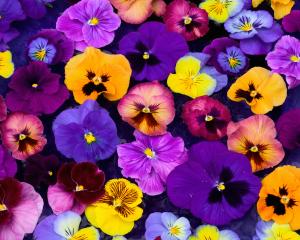Opened in July 2008, Dunedin's garden, trumpeted as the only authentic Chinese garden in the southern hemisphere, replicates a late Ming/early Ching scholar's garden and is based on the Master of the Nets garden in Suzhou, some 75km from Shanghai.
The Dunedin Chinese Garden was developed to recognise the Chinese who came to Otago in search of gold and to ensure authenticity, the Shanghai Municipal Government and Shanghai Museum worked with the Dunedin Chinese Gardens Trust.
The buildings and hard landscaping were built and assembled in Shanghai, then dismantled and brought to Dunedin to be reconstructed using Chinese artisans and supervisors, as well as local contractors.
"It is our own oasis in the middle of the city," garden manager Margo Winchester says.
She took over her present role in January and is keen to develop what she calls "seasonality", to encourage people to visit throughout the year. A season ticket also promotes that.
"In winter, with the low sun, the whole artistic side of the garden comes into its own."
On loan from the Dunedin Botanic Garden, a potted Chinese red pine (Pinus tabuliformis) casts a shadowed image on a white wall, as does nearby bamboo. These two plants, plus winter-flowering Prunus, are features of gardens in China, where winters can be harsh. (Shanghai, for example, can have snow on the ground in winter.)
Chrysanthemums were used successfully in autumn and Ms Winchester is hoping to get Chinese varieties - virtually unknown here - for next season.
She is also looking to develop as wide a range as possible of winter flowers and scents, and on a recent visit to Shanghai was seeking more items for the garden's gift shop.
Although plants have had to be sourced in New Zealand, advisers from Shanghai visit "every couple of years" to ensure things remain as authentic as possible.
"When they were out in March, they gave us lots of good, practical advice," she says.
A heat pump had been considered for a small meeting venue but there were concerns about its lack of authenticity. The Chinese had a different view: "If you're cold, you should do it," they told Ms Winchester.
SEE IT
- The Dunedin Chinese Garden is open daily from 10am to 5pm, with evening viewing on Wednesdays from 7pm to 9pm. Admission is $9 ($6 for students and beneficiaries) and children under 13 get in free if accompanied by an adult.
- If you plan to visit three times or more, save by buying a 12-month season ticket ($18 for adults, $12 for students and beneficiaries).
- Guided tours ($20) are also available. For details, see the website at www.dunedin.govt.nz/facilities/dunedin-chinese-garden













